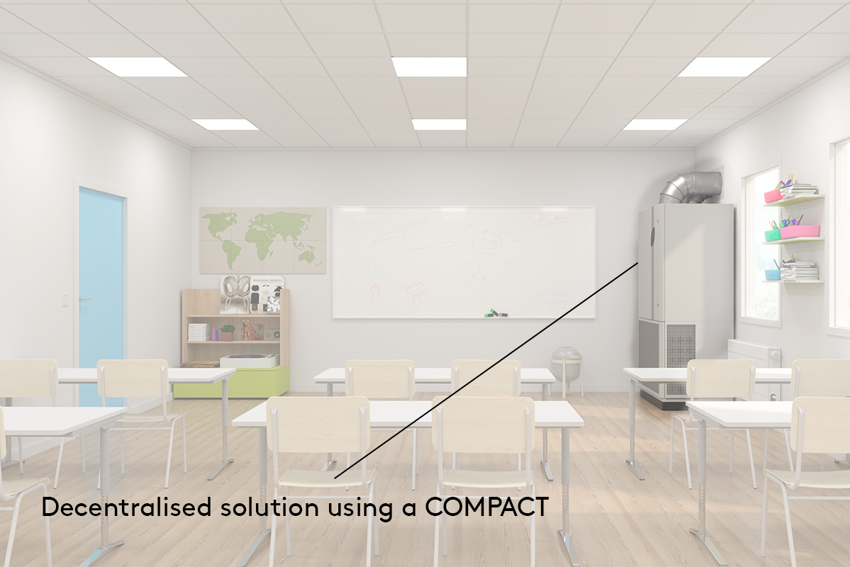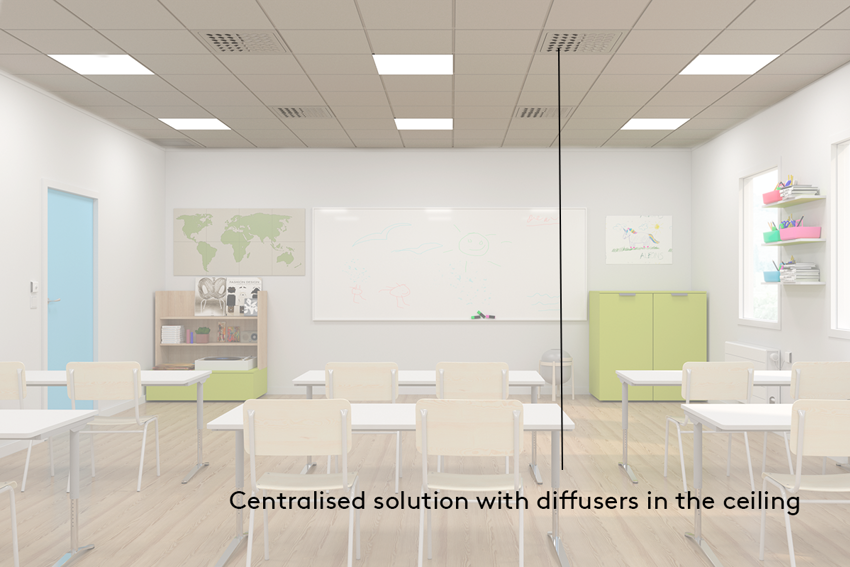
We have excellent ventilation solutions to fit your school
Decentralised System
By decentralised, we mean that each ventilation system is individually installed within a room and is not connected to a central system through ducting. Decentralised ventilation offers great flexibility in terms of installation and is easy to implement.
This solution gives you the option to work from one classroom to the next during installation, reducing the disruption to classroom timetables.
With Swegon's wide range of products it is easy to find something to suit the configuration and size of each classroom.
For example, a COMPACT Air or Class Unit PX, can be placed directly in the class room against a wall or in the ceiling, which means no duct work is needed, providing unbeatably fast installation. This will provide fresh air into the room and extract the polluted air – but thanks to the built-in heat exchanger, the energy in the indoor air will not be wasted.
| Advantages | Disadvantages |
|
|

Centralised system
Centralised ventilation means that the heating and cooling is occuring at one central point with the air flowing to classrooms via ducts.
A centralised system offers significant energy savings. This is because the climate system is streamlined and the costs associated with maintenance and upkeep are lower.
This is where you can set some parameters to cover all the classrooms. Making sure your ventliation is not running at full capacity outside of school hours for example.
The centralised system is composed of one or more double-flow air handling units placed directly on the roof or in technical rooms.
| Advantages | Disadvantages |
|
|
Demand Controlled Ventilation
Working from a central system, demand controlled ventilation optimises not only the comfort in the room, but for the building as a whole. It minimises energy usage for the building and gives a complete overview of the status of the building in a single interface.
Our WISE system is a complete solution for demand controlled indoor climate. Preferably based on a central GOLD air handling unit, it gives maximum energy savings and comfort – and is unbeatably easy to install and commission thanks to wireless technology which makes communication cables history.
With a WISE IAQ sensor we can measure the temperature and humidity as well as carbon dioxide and VOC (volatile organic compounds) levels. This means it monitors not just pollutions from people, but also pollutants coming from cleaning products, furniture and building materials.
This sensor provides an comprehensive status check for each class room, so the WISE system can optimise both learning conditions here and now, and health aspects in the long run.
| Advantages | Disadvantages |
|
|
See the differences
A decentralised solution like a COMPACT air handling unit can fit subtly into the corner of the classroom (image below left). Or on the other hand, a centralised system using diffusers fits smoothly into the ceiling (image below right).


Get in touch
Got a project in mind? Want to learn more?